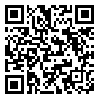
International Journal of Industrial Engineering & Production Research
Iran University of Science & Technology
Mon, Nov 25, 2024
[Archive]
Volume 25, Issue 2 (IIJEPR 2014)
IJIEPR 2014, 25(2): 83-94 |
Back to browse issues page
Download citation:
BibTeX | RIS | EndNote | Medlars | ProCite | Reference Manager | RefWorks
Send citation to:



BibTeX | RIS | EndNote | Medlars | ProCite | Reference Manager | RefWorks
Send citation to:
ruhparvar M, mazandarani zadeh H, Nasirzadeh F. Equitable Risk Allocation in Construction Projects: Fuzzy Bargaining Game Approach. IJIEPR 2014; 25 (2) :83-94
URL: http://ijiepr.iust.ac.ir/article-1-557-en.html
URL: http://ijiepr.iust.ac.ir/article-1-557-en.html
1- Azad University
2- Assistant Professor, Dept. of Technical- Engineering, Water Engineering Group, Imam Khomeini International University (IKIU) ,hzadeh@iust.ac.ir
3- Assistant Professor, Dept. of Civil Engineering, Faculty of Engineering,
2- Assistant Professor, Dept. of Technical- Engineering, Water Engineering Group, Imam Khomeini International University (IKIU) ,
3- Assistant Professor, Dept. of Civil Engineering, Faculty of Engineering,
Abstract: (17822 Views)
An equitable risk allocation between contracting parties plays a vital role in enhancing the performance of the project. This research presents a new quantitative risk allocation approach by integrating fuzzy logic and bargaining game theory. Owing to the imprecise and uncertain nature of players’ payoffs at different risk allocation strategies, fuzzy logic is implemented to determine the value of players’ payoffs based on the experience and subjective judgment of experts involved in the project. Having determined the players' payoffs, bargaining game theory is then applied to find the equitable risk allocation between the client and contractor. Four different methods including symmetric Nash, non-symmetric Nash, non-symmetric Kalai–Smorodinsky and non-symmetric area monotonic are implemented to determine the equitable risk allocation. To evaluate the performance of the proposed model, it is implemented in a pipeline project and the quantitative risk allocation is performed for the inflation risk as one of the most significant identified risks.
Type of Study: Research |
Subject:
Decision Analysis and Methods
Received: 2013/10/12 | Accepted: 2014/02/26 | Published: 2014/05/26
Received: 2013/10/12 | Accepted: 2014/02/26 | Published: 2014/05/26
Send email to the article author
| Rights and permissions | |
 | This work is licensed under a Creative Commons Attribution-NonCommercial 4.0 International License. |



